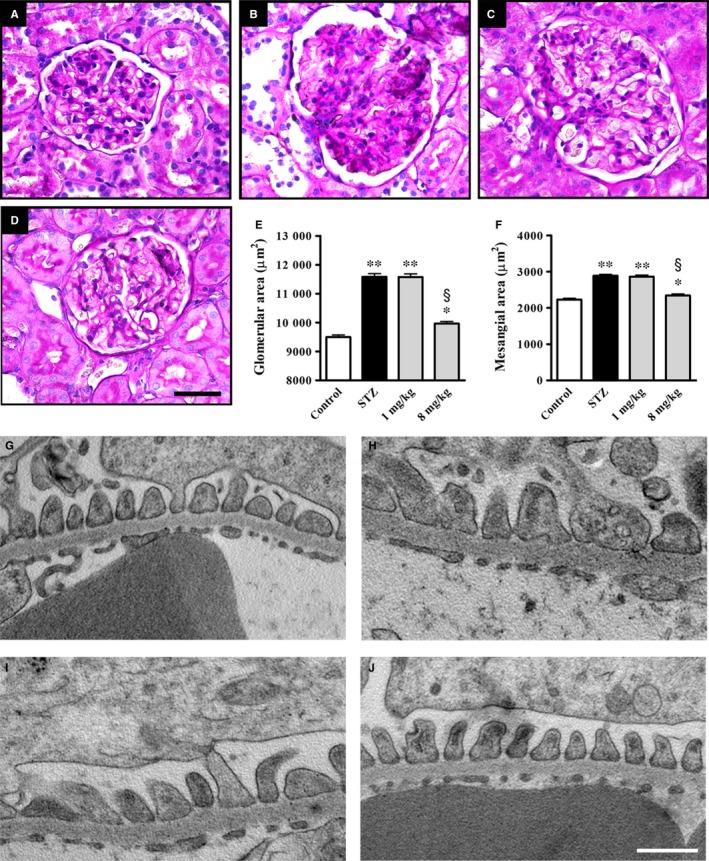Figure 8.

Effects of UPARANT on glomerular morphology and filtration barrier. (A‐D) Representative histological sections stained with periodic acid‐Schiff of kidneys from control (A) and STZ rats either untreated (B) or treated with UPARANT at 1 mg/kg (C) or 8 mg/kg (D). UPARANT at 1 mg/kg did not affect the glomerular morphology (C), whereas at 8 mg/kg attenuated glomerular hypertrophy and mesangial expansion (D). Scale bar: 50 μm. (E, F) Quantitative evaluation of glomerular hypertrophy (E) and increased mesangial area (F) confirmed qualitative assessment (*P < 0.05 and **P < 0.001 vs control; § P < 0.001 vs STZ; one‐way ANOVA followed by Newman‐Keuls’ multiple comparison posttest). Data are presented as histograms. Each column represents the mean ± SEM of data from 15 glomerular sections (five sections/animal, three animals/group). (G‐J) UPARANT effects on glomerular filtration barrier morphology. EM micrographs at 30 K magnification that are representative of three animals/group showing ultrathin podocyte sections from control (G) or STZ rats either untreated (H) or treated with UPARANT at 1 mg/kg (I) or 8 mg/kg (J). UPARANT at 8 mg/Kg, but not at 1 mg/kg, reduced high glucose‐induced thickening of the glomerular basement membrane and almost recovered foot process effacement. Scale bar: 500 nm
